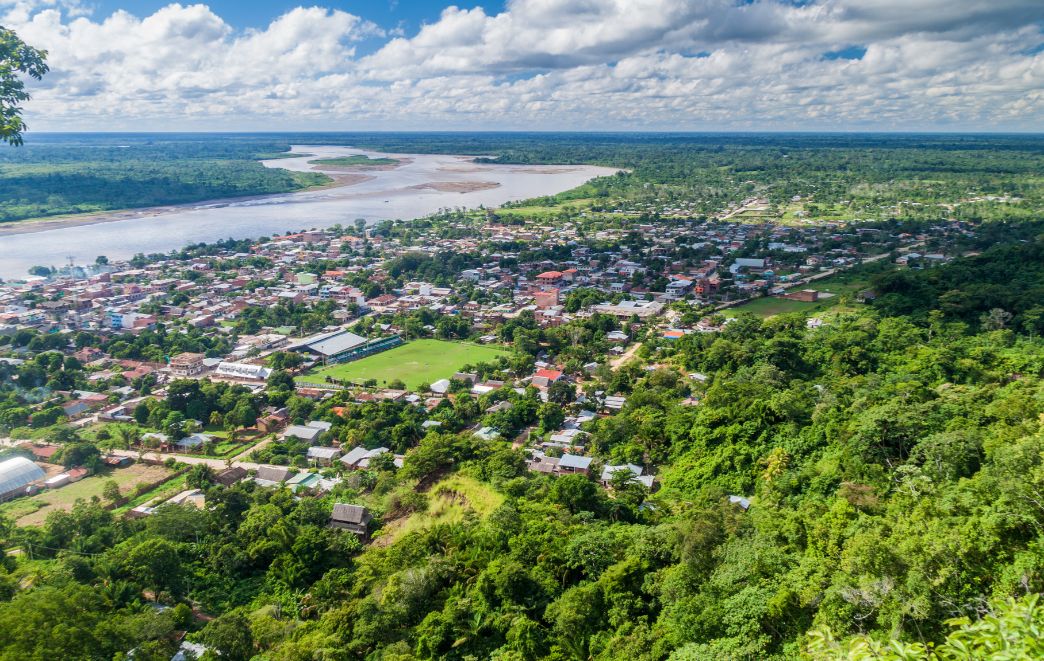
How did Rurrenabaque, a small jungle town in Bolivia, evolve from a key player in the nation’s timber industry to a leading eco-tourism destination? Located on the banks of Rio Beni, near some of the most pristine and accessible nature preserves in the area, Rurrenabaque is as picturesque as its name is daunting for foreigners to pronounce. Unfortunately, a great deal of the local forests are dwindling, which is why Kuoda supports eco-tourism in Rurrenabaque.
Here’s all you need to know about Rurrenabaque, Bolivia, a destination of rare and complex wilderness:
Where is Rurrenabaque

Rurrenabaque is where the Bolivian Andes meet the Amazon, a place where the beauty lies not so much in the town but in the laidback locals and the surrounding natural areas.
Located 266 miles (428km) northeast of La Paz, Bolivia’s high-altitude capital, Rurrenabaque is a breath of fresh air. Before its natural beauty was recognized and preserved, however, the small town would be used as a gateway from the Amazon to the highlands during the nineteenth-century rubber boom.
Thanks to the creation of Parque Nacional Madidi and the rise of ecotourism, Rurrenabaque has since curtailed its exhaustion of valuable timber.
How to get there

From La Paz, Rurrrenabaque can be reached by either plane or bus. The fastest option is flying, averaging 40 minutes, while the most scenic and cheapest option would be by bus. That said, watching snow-capped mountains turn into the lush Amazon jungle from a bird’s-eye view can also be quite breathtaking. And let’s face it: a 20-hour bus ride on bumpy rides is downright grueling.
What to do in Rurrenabaque

Parque Nacional Madidi
Nearly 900 species of birds and around 150 types of mammals call Bolivia’s Madidi National Park home—and we haven’t even mentioned the number of fish, reptiles and amphibians that can be seen here as well! Part of the reason this park displays such diverse wildlife is the fact that the altitude ranges from 300 meters to over 5500 meters above sea level.
From cloud forest to low-sitting savannahs, the park encompasses an area of 18,958 square kilometers, making the Madidi National Park one of the largest protected areas in Bolivia. It is also extremely dense with lush foliage which is why Kuoda matches our guests with the most knowledgeable guides.
Besides the vast array of endemic flora and fauna, what makes Madidi worth protecting? Over 40 indigenous tribes live in this section of the rainforest and continue to use the plants for medicinal purposes.
Pampas del Yacuma
The variety of flora and fauna inhabiting these swampy wetlands make the three-hour drive from Rurrenabaque to the Yacuma Pampas well worth it. Imagine gliding down the Yacuma River and spotting a pink dolphin, for example! Of course, there’s never a playful monkey too far away to flirt with visitors so be sure to keep your camera at the ready.
Ecolodges dot the area to support the local economy which in turn helps protect this wondrous natural area. Kuoda travelers may choose from a variety of activities, including jungle treks, immersive community visits, piranha fishing and swimming in the river.
El Chorro
It doesn’t take long before one needs a refreshing break from the Amazonian heat. Just over half a mile upstream from the town of Rurrenabaque is El Chorro waterfall. Surrounded by small pools for soaking, the cascade can only be reached by boat, adding to its allure.
An engraved rock across from the waterfall depicts a serpent which, according to local legend, served as a warning: if the river’s water level reached the serpent that meant that the river was too high to be navigable.
Adventure activities
If spotting a lengthy anaconda, hair-raising tarantula or white caiman doesn’t satisfy your need for a thrill, strap on your hiking boots and head out for an adventure.
Many eco-lodges offer zip line activities, allowing you to fly through the rainforest canopy like one of the many colorful winged creatures that thrive in the area. Prefer to keep your feet on the ground? There are plenty of gorgeous hiking trails in Rurrenabaque, varying in length and difficulty, just ask our Kuoda travel experts!
Best time to go

The rainforest climate of Rurrenabaque means rain can be expected even during the so-called dry season. The most rainfall is seen between November-April. This is when the river level rises and floods much, though not all, of the forested land. The wet season would be ideal for those wanting to spend more time exploring by boat than by foot. The driest season lands between May-October, ideal for jungle treks.
Rurrenabaque is fascinating any time of year, however, like most of the Amazon, the best time to visit is just before the rainy season or soon after it ends. This way heavy rainfall is not as likely to scare away wildlife and the river is high enough to navigate by boat.
Where to visit nearby
- La Paz: The world’s highest capital. A 40-minute flight from Rurrenabaque.
- Lake Titicaca: The world’s highest navigable lake, located on the border of southern Peru and northern Bolivia. Depart from La Paz and arrive in Copacabana, on the shores of the lake, in four hours.
- Salar de Uyuni: The world’s largest salt flat can be reached via a flight from La Paz.
How to enjoy Rurrenabaque with Kuoda

When seeking an immersive jungle experience in a remote South American destination, Rurrenabaque is your place. On a personalized journey designed by Kuoda, you can experience the best that this small Bolivian jungle town has to offer: from nearby nature escapes and wildlife spotting to visits and homestays with indigenous communities. All the while, we’ll ensure that your trip is carefully crafted to support our commitment to sustainability. Contact us today to start planning your journey to Rurrenabaqye, Bolivia: info@kuodatravel.com
Peru’s Northern Beaches Travel Guide: Your Adventure-Filled Getaway
Bask in the northern BEACHERGOER’S PARADISE, With its dependable year-round sunshine, pristine coastline, s...
Read PostThe Most Eco-Friendly Hotels in South America For The Responsible Traveler
For the eco friendly hotels in South America, responsible travel in hospitality is not just a trend but a nece...
Read PostExplore Peru’s Sacred Valley: A Journey Through Incan Wonders
Experience a land BLESSED BY INCAS, Tucked away in the Andean foothills of Peru lies the historic Sacred Vall...
Read Post

 Call
Call 























